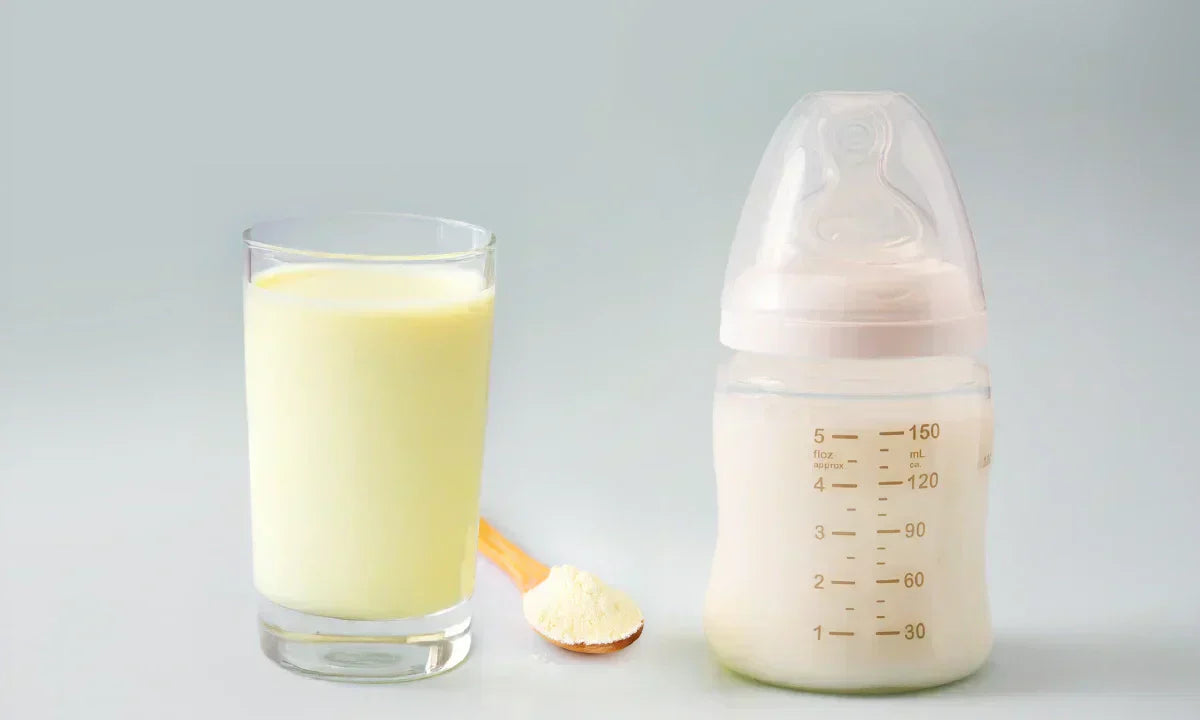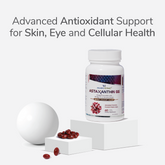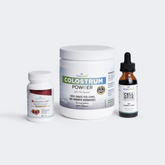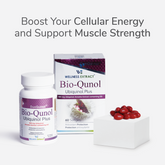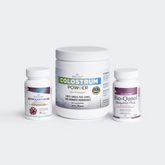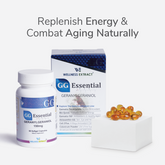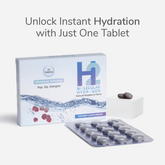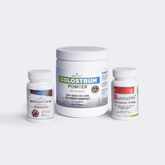Estimated Reading Time: 5 minutes
|Colostrum vs Breast Milk: Key Differences You Should Know
Did you know that the first milk your body produces after childbirth is a superfood packed with nutrients?
When newborns enter the world, they are fragile and have weak immunity. They encounter countless new microbes and environmental stressors. How does nature ensure their survival? The answer lies in two potent elixirs: colostrum and breast milk.
Colostrum is the very first meal that your baby receives, and it is full of antibodies and immune-supporting factors. Thereafter comes breast milk, a dynamic source of nutrition naturally made to meet your baby's growing needs.
Though both colostrum and breast milk are essential for the baby, they are not the same! Wondering what is the difference between colostrum and breast milk? In this article, we'll shed light on colostrum vs breast milk, especially from a scientific perspective. Read ahead and understand why you, as new parents, should be bothered about it.
What Exactly is Colostrum?
Before learning more about colostrum vs. breast milk, you must know what colostrum is. All lactating mammals, including humans, produce colostrum as the first milk after giving birth. Colostrum production begins during pregnancy and continues until the first few days after the young one's arrival.
Colostrum is highly concentrated with proteins, antibodies, growth factors, essential nutrients, and immune cells, giving newborns their first line of defense against infections. Its composition is such that it supports your infant's rapid growth and immune needs.
Research shows that colostrum is rich in Immunoglobulin A (IgA), lactoferrin, and other growth factors. These are crucial for protecting your baby against bacteria, viruses, and other pathogens during the vulnerable first days of life.
Also Read: Benefits of Bovine Colostrum for Adults
|
Key Benefits of Colostrum |
|
|
Helps build a healthy gut |
Lowers the risk of jaundice |
|
Strengthens the immune system |
Acts as a laxative, helping release meconium |
|
Small amounts are perfectly suitable for tiny tummies |
Supports growth & development |
Breast Milk: Continuous Nutritional Support
As a new mom, you produce breast milk after colostrum. It comes in stages: colostrum, transitional milk, and mature milk. Breast milk begins to flow a few days after birth. It's packed with nutrients, fats, proteins, and carbohydrates necessary for your baby's growth. It is more calorie-dense than colostrum and contains a higher proportion of fat and lactose.
Your breast milk supports your baby's continued growth and development. While both fluids provide immunity, breast milk's immune-enhancing properties evolve. It adapts to the infant's changing needs. It continues to support immunity. However, its primary purpose shifts to supplying the energy required for growth and development.
|
Key Benefits of Breast Milk |
|
|
Has a balanced nutrition for the changing needs of the child |
Prevents ear infections and stomach bugs |
|
Easy to digest |
Ongoing support for Immune System |
Key Differences Between Colostrum and Breast Milk
Your breast milk undergoes a fascinating transition from colostrum to mature milk. This transformation is to provide tailored nutrition for your baby's evolving needs. Both colostrum and breast milk are packed with nutrients and are vital for your newborn in different stages of growth and nourishment. They serve different purposes and have distinct characteristics. Here's a breakdown of colostrum vs breast milk:
|
Feature |
Colostrum |
Mature Breast Milk |
|
Timing |
Mothers produce colostrum during late pregnancy and the first 2-5 days postpartum. It's the first milk that the baby receives after birth |
Mature milk begins to replace colostrum around 10-15 days postpartum, after the transitional milk phase. |
|
Appearance |
It is thick, sticky, and yellowish, largely due to high levels of carotenoids and vitamin A. |
Mature breast milk is thinner and bluish-white, reflecting a different composition. |
|
Volume |
Mothers produce it in small amounts, just the right amount for a newborn's tiny stomach. |
Mothers produce mature breast milk in larger quantities, with an average daily production of 24-30 ounces. |
|
Fat Content |
It has a low-fat content (15-20 g/L), making it easier for newborns to digest. |
It has a higher fat content (35-40 g/l), which is essential for the baby's growth and development. |
|
Protein Content |
It has a very high protein content (14-16 g/L), with a whey-to-casein ratio of 90:10, which makes it easily digestible for newborns. |
It has a lower protein content (8-10 g/L) and a whey-to-casein ratio of 60:40, which supports the baby's growth over time. |
|
Carbohydrates |
It has a lower lactose content (20-30 g/L) and provides a gentle start to a newborn's digestion. |
It has a higher lactose content (67-70 g/L), which helps in brain development and energy supply. |
|
Immunological Components |
Colostrum is rich in immune factors like antibodies (IgA), white blood cells, and lactoferrin, which protect against infections and help establish gut health. |
While mature breast milk still contains immune components, they are present at lower concentrations compared to colostrum. |
|
Vitamins & Minerals |
It is high in vitamin A, zinc, magnesium, and copper, all of which are crucial for immunity and early development. |
It is nutritionally balanced but contains lower concentrations of some specific vitamins and minerals like zinc and vitamin A. |
|
Purpose |
Colostrum provides immunity, helps establish gut health, and supports early digestion. It acts as a protective shield in the newborn's first days. |
Mature breast milk sustains growth, hydration, and ongoing immune support as the baby continues to grow and develop. |
Everything Considered
Both colostrum and breast milk play vital and complementary roles in nurturing your newborn. Colostrum, the first milk your body produces, is packed with potent antibodies and nutrients. It provides your baby with a strong foundation of immunity and supports healthy digestion. This nutrient-dense, yellow-colored milk is nature's first gift to your baby, ensuring the protection they need during their early days.
As your baby grows, your body transitions to mature breast milk, which specifically meets your baby's growing nutritional needs. While it is still rich in immune-boosting properties, mature breast milk focuses more on providing the essential fats, proteins, and carbohydrates necessary for your baby's continued growth and brain development.
Whether you breastfeed exclusively, combine breastfeeding with formula, or choose another feeding method, what matters the most is that you're providing love, nourishment, and care for your baby. Enjoy this unique journey of motherhood with love and confidence. Know that every step you take, no matter how small, is a step toward your baby's health and well-being.
References
-
Carr, Laura E., et al. "Role of human milk bioactives on infants' gut and immune health." Frontiers in immunology 12 (2021): 604080. https://pmc.ncbi.nlm.nih.gov/articles/PMC7909314/






